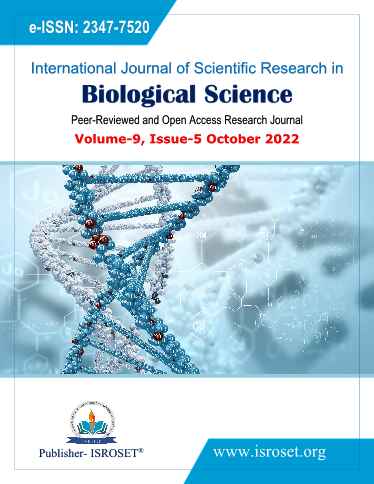Giant Oocyte with Two Polar Bodies: Case Report of Self Patient
Keywords:
Giant oocyte, meiotic spindle, polar bodiesAbstract
Here we report a case of the giant oocyte with two polar bodies, with the immense of ART technology, formally giant oocytes are a very rare phenomenon among humans and embryos may develop from oocytes. (1,2), and Giant oocytes are defined to have a 35% larger diameter and twice the volume of the normal oocyte. Fertilization and progression of a giant oocyte are suspected to be the cause of triploidy, which is defined as triploidy with two maternal and one paternal complement. The hypothesis for the mechanism of their formation is a cytoplasmic fusion of two oogonia and the second one is the lack of cytokinesis during mitotic divisions in an oogonium. In this case report, we present one Giant oocyte with two distinct polar bodies. Giant oocytes can develop into embryos that are morphologically normal, but genetically abnormal, embryologist should aware of this phenomenon. For this reason, the scientific aim of this report is to present make awareness among practicing embryologists.
References
Angell RR, Xian J, Keith J, “Chromosome anomalies in human oocytes in relation to age,” Human Reproduction, Vol 8, Issue 7, pp 1047–1054, 1 July 1993.
Rosebush B, “Cytogenetic analysis of Giant oocytes and zygotes to assess their relevance for the development of digynic triploidy,” Human Repoduction, vol.9, Issue 8, pp:2388-2393
Munne S, Alikani M, CohenJ. “Monospermic polyploidy and atypical embryo morphology” Human Reproduction, vol.9, issue 3, pp:506-510
OrganizationWH. “WHO laboratory manual for the examination and processing of human semen 2020,” WHO Press Switerland 2020.
Balakier H, Bouman D, Sojecki A, Librach c, Squire JA. “Morphological and cytogenetic analysis of human Giant oocytes and Giant embryo,” Human Reproduction, vol.8. Issue 4, pp: 2394-2401, 2002.
Pellestor.F,“Frequency and distribution of aneupliody in human female gamete” Human Genetic, Vol.3, Issue 2(86), pp:283-288, 1991.
Jacobs,P.A.“The chromosome complement of human gametes,” Oxford.Rev. Reproductive Biology, Vol.1, Issue 2, pp:47-72, 1992.
M.P.Petrushko,N.O.Buderatska,J.V.Gontar “Morphological and Molecular Cytogenetic Characteristics of Giant Human Oocytes,” Cytology and Genetics, Vol.3, Issue 6, pp132-137, 2021.
Hiroya Kitasaka,Yoshimi Konuma B.S, M, “Oocyte cytoplasmic diameter of ?130 µm can be used to determine human giant oocytes,” F&S Science, Vol.3, Issue 1, pp:10-17, 2022.
Alessandro Bartolacci, Giulia Intra,Giovanni Coticchio, Miriam dell’Aquila, “Does morphological assessment predict oocyte developmental competence? A systematic review and proposed score,” Journal of Assisted Reproduction and Genetics, Vol.2 Issue 4, pp:3-17, 2022.
Downloads
Published
How to Cite
Issue
Section
License

This work is licensed under a Creative Commons Attribution 4.0 International License.
Authors contributing to this journal agree to publish their articles under the Creative Commons Attribution 4.0 International License, allowing third parties to share their work (copy, distribute, transmit) and to adapt it, under the condition that the authors are given credit and that in the event of reuse or distribution, the terms of this license are made clear.







